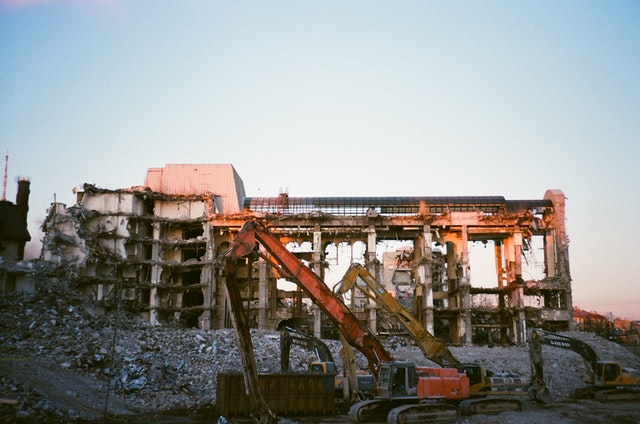The Demand for Retrofit Advice
With retrofit remaining a key buzzword in the built environment, the demand for good quality guidance on the matter is growing. Watch the...
Read Full Article
Could carbon emissions be reduced by upgrading older buildings instead of knocking them down?
According to REHAU, building solutions specialists, building designers and specifiers should consider retrofitting solutions to improve overall sustainability.
The Royal Institute of Chartered Surveyors (RICS) estimates that a sizeable proportion of a building’s lifecycle carbon is emitted during construction – 35 per cent and 51 per cent for office and residential properties respectively.
These findings have prompted campaigns for developers to prioritise the restoration of older properties over demolishing and replacing them at high carbon costs.
“The carbon costs associated with their construction means new buildings may not pay back their carbon debt for decades. As such, retrofitting should become a priority for specifiers and developers looking to improve the sustainability of their operations, especially as lowering carbon emissions grows in importance in the run-up to 2050.”
–Steve Richmond
Head of Marketing and Technical, REHAU Building Solutions
According to a report on Canadian news website The Globe and Mail, repurposing properties to residential conversions is not only financially viable but an environmentally friendly choice too.
The article refers to a project by Strategic Group, who planned residential conversions of four of its office properties in 2017 after office demand fell in the province of Alberta.
The company’s CEO, Riaz Mamdani told The Globe and Mail: “It created an opportunity to think a bit differently.
“It’s certainly environmentally better. We have essentially changed 500,000 square feet of useless office space into places where people live and we’ve saved 50,000 tonnes of demolition material compared to tearing the buildings down and building new.
“With a creative approach, we will have full occupancy earlier than waiting a dozen years for an office market recovery.”
The Gensler Research Institute has built a framework for converting underperforming office buildings to residential use.
Using Washington D.C.’s central business district as an example, Gensler categorised each office property according to five archetypes: wedge, cube, light or L-shaped, blinder, and heavy or slight slab. They then mapped out the degree to which each archetype is fit for residential conversion.
Examples of parameters that might suggest conversion to residential property indicates a better return on investment includes high cultural or heritage value, desirable location, a large floor plate, a high number of south-facing windows, and adequate parking facilities.
According to REHAU, the viability of this upgrade-centric approach is very much dependent on support from the building services sector:
“The government committing the country to net zero emissions by 2050 has made improving sustainability a key concern across all sectors, including construction,” says Steve Richmond, Head of Marketing and Technical at REHAU Building Solutions.
“With that in mind, these RICS figures show just how damaging it can be to opt for new-builds over renovating older properties, especially at a time when we should be reducing emissions.
“While building services suppliers should incorporate retrofit capabilities into their product designs as standard, it is now clearer than ever that this consideration should become a necessity. These solutions will be vital to improving the efficiency of older buildings in line with modern standards while negating the carbon costs associated with creating the materials required to build a new property in their place.
“The carbon costs associated with their construction means new buildings may not pay back their carbon debt for decades. As such, retrofitting should become a priority for specifiers and developers looking to improve the sustainability of their operations, especially as lowering carbon emissions grows in importance in the run-up to 2050.”
Picture: A photograph of a large building being demolished
Article written by Ella Tansley | Published 03 September 2020
With retrofit remaining a key buzzword in the built environment, the demand for good quality guidance on the matter is growing. Watch the...
Read Full ArticleRICS has launched an eight-week-long consultation to gather opinions from industry professionals on the new RICS Residential Retrofit Standard for 2023. The data...
Read Full ArticleThe world’s first international standard for carbon reporting across all areas of construction has had its reporting standards published for...
Read Full ArticleHopkins Architects are applying a “retrofit-first” approach to the enhancement of One Embankment Place – a prominent building above Charing Cross...
Read Full ArticleWith extreme weather a recurring operational risk, facilities management teams must retrofit existing buildings to keep them comfortable, compliant and...
Read Full ArticleThe RICS Presidential Team will welcome Susanne Eickermann-Riepe as Senior Vice President from 1 January 2026. Susanne is an independent Senior Executive Advisor...
Read Full ArticleThe Royal Institution of Chartered Surveyors has developed a new standard for the responsible use of artificial intelligence in surveying practice. The standard will...
Read Full ArticleBrookfield Properties has secured planning permission to redevelop Denys Lasdun’s Milton Gate, to increase the amount of office space by around 50 per cent. CGIs...
Read Full ArticleMace has been appointed to deliver one of the largest building reuse projects in the City of London, at 65 Gresham Street. The extension, designed by Squire &...
Read Full ArticleJustin Sullivan has been named the new President of the Royal Institution of Chartered Surveyors. Taking over from Tina Paillet, Justin is the Founder and CEO of...
Read Full Article